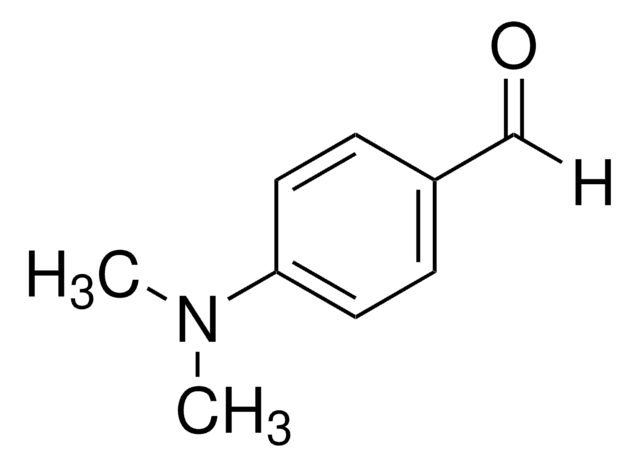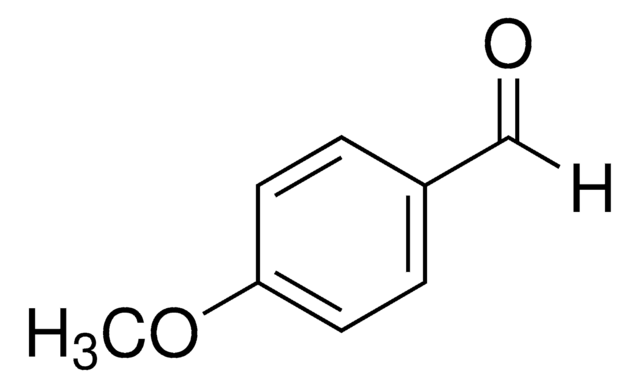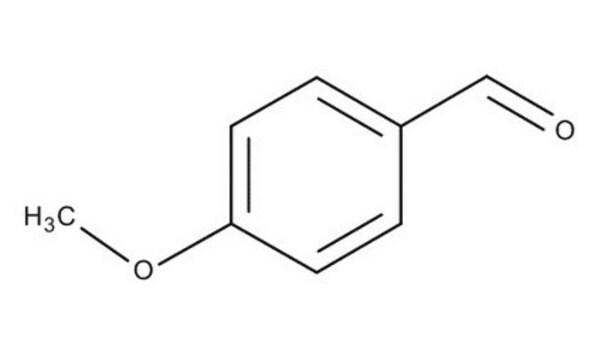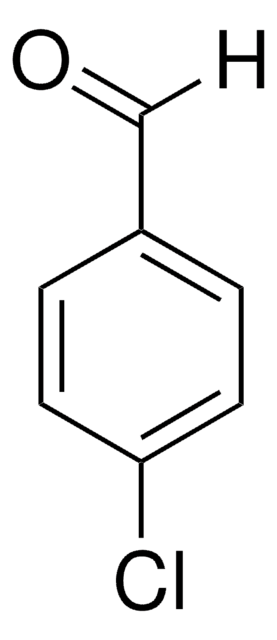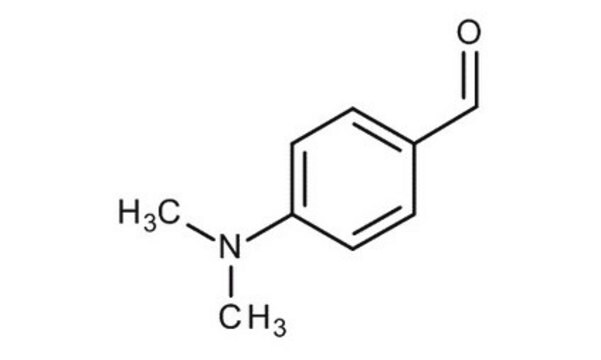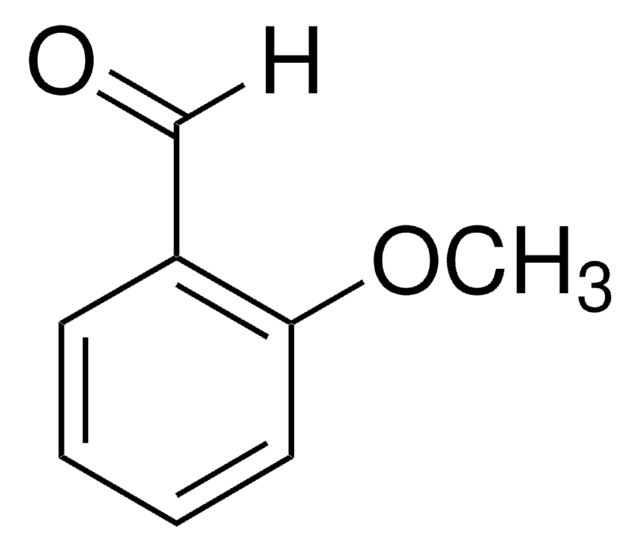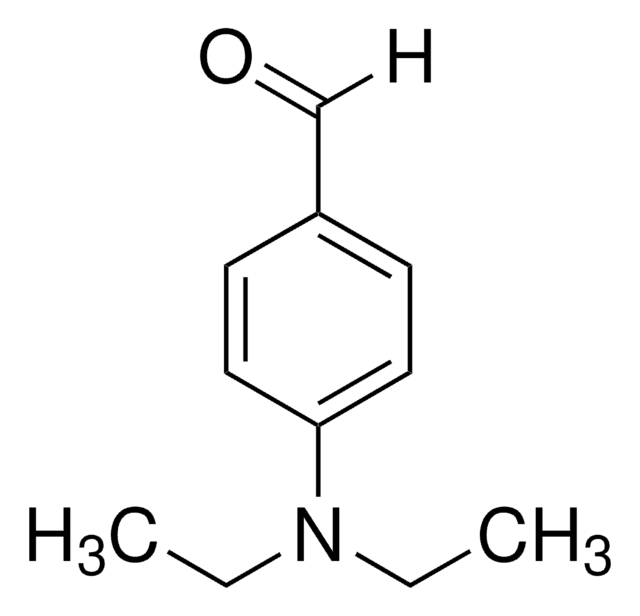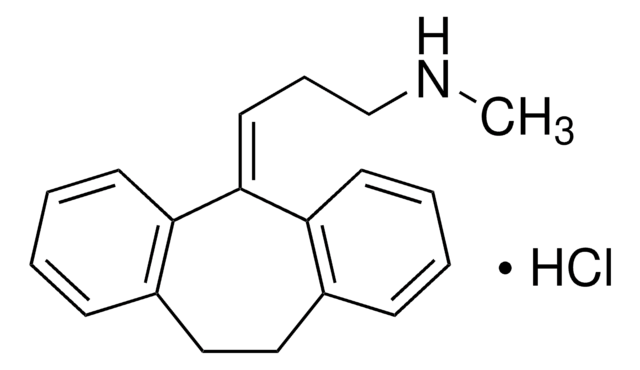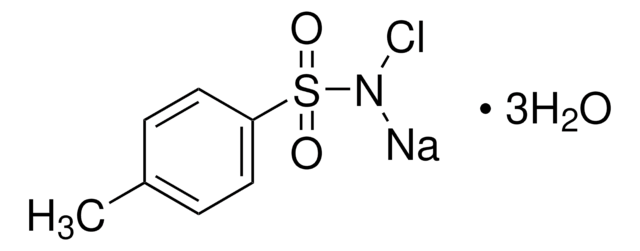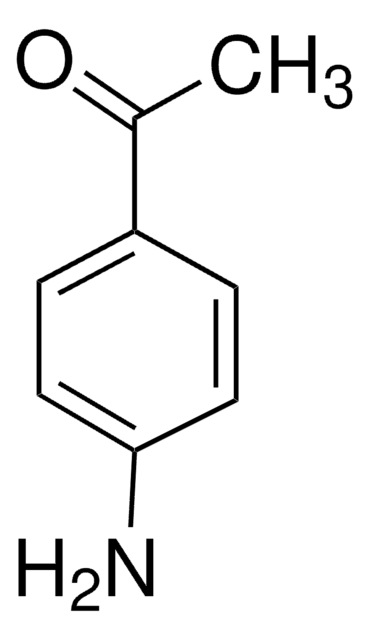Wszystkie zdjęcia(1)
Kluczowe dokumenty
109762
4-(Dimethylamino)benzaldehyde
98%
Synonim(y):
Ehrlich’s reagent
Zaloguj sięWyświetlanie cen organizacyjnych i kontraktowych
About This Item
Wzór liniowy:
(CH3)2NC6H4CHO
Numer CAS:
Masa cząsteczkowa:
149.19
Beilstein:
606802
Numer WE:
Numer MDL:
Kod UNSPSC:
12352100
Identyfikator substancji w PubChem:
NACRES:
NA.22
Polecane produkty
Próba
98%
Formularz
solid
mp
72-75 °C (lit.)
rozpuszczalność
H2O: slightly soluble
grupa funkcyjna
aldehyde
amine
ciąg SMILES
CN(C)c1ccc(C=O)cc1
InChI
1S/C9H11NO/c1-10(2)9-5-3-8(7-11)4-6-9/h3-7H,1-2H3
Klucz InChI
BGNGWHSBYQYVRX-UHFFFAOYSA-N
Szukasz podobnych produktów? Odwiedź Przewodnik dotyczący porównywania produktów
Opis ogólny
4-(Dimethylamino)benzaldehydeis an organic carbonyl compound containing amino and aldehyde groups. The compound is used in Ehrlich and Kovac′s reagents to test indole.4-(Dimethylamino)benzaldehyde is used to prepare aldehydes from Grignard reagents. In addition, it is used as a color test reagent for pyrroles, primary amines, and hydrazines.
Zastosowanie
Tworzy barwne produkty kondensacji (zasady Schiffa) z pirolem i pierwszorzędowymi aminami.
4-(Dimethylamino)benzaldehyde was used in the chitinase assay.
4-(Dimethylamino)benzaldehyde is used:
4-(Dimethylamino)benzaldehyde is used:
- In the synthesis of azo-azomethine dyes by condensation reaction.
- As a reagent in the synthesis of molecular adduct 4DMAB4NP (4-(dimethylamino)benzaldehyde 4-nitrophenol) by reacting with 4-nitrophenol.
- In the preparation of Schiff base.
Ta strona może zawierać tekst przetłumaczony maszynowo.
Hasło ostrzegawcze
Warning
Zwroty wskazujące rodzaj zagrożenia
Zwroty wskazujące środki ostrożności
Klasyfikacja zagrożeń
Skin Sens. 1B
Kod klasy składowania
11 - Combustible Solids
Klasa zagrożenia wodnego (WGK)
WGK 1
Temperatura zapłonu (°F)
327.2 °F - closed cup
Temperatura zapłonu (°C)
164 °C - closed cup
Środki ochrony indywidualnej
Eyeshields, Gloves, type N95 (US)
Wybierz jedną z najnowszych wersji:
Masz już ten produkt?
Dokumenty związane z niedawno zakupionymi produktami zostały zamieszczone w Bibliotece dokumentów.
Klienci oglądali również te produkty
M Legrand et al.
Proceedings of the National Academy of Sciences of the United States of America, 84(19), 6750-6754 (1987-10-01)
Four endochitinases (poly[1,4-(N-acetyl-beta-D-glucosaminide)] glycanohydrolase, EC 3.2.1.14) have been purified from leaves of Nicotiana tabacum cv. Samsun NN reacting hypersensitively to tobacco mosaic virus. Two of them are acidic proteins of molecular weights 27,500 and 28,500 and have been identified as
Synthesis, spectroscopic and TD-DFT quantum mechanical study of azo-azomethine dyes. A laser induced trans-cis-trans photoisomerization cycle
Georgiev A, et al.
Spectrochimica Acta Part A: Molecular Spectroscopy, 192, 263-274 (2018)
Synthesis, structural, spectral, third order nonlinear optical and quantum chemical investigations on hydrogen bonded novel organic molecular adduct 4-(dimethylamino) benzaldehyde 4-nitrophenol for opto-electronic applications
Karthick S, et al.
Journal of Molecular Structure, 1178, 352-365 (2019)
Jun-Min Guo et al.
Journal of agricultural and food chemistry, 58(11), 6556-6561 (2010-05-15)
A simple colorimetric method for the differentiation of indoleacetic acid (IAA) and indolebutyric acid (IBA) in plant samples is described. The color change is based upon the reaction between the auxins and p-(dimethylamino)benzaldehyde (PDAB, Ehrlich reagent) following the electrophilic substitution
Andrew P Breksa et al.
Journal of agricultural and food chemistry, 55(13), 5013-5017 (2007-06-05)
A method for estimating the total limonoid aglycone and glucoside concentrations in Citrus samples in terms of limonin and limonin glucoside equivalents is presented. The method consists of extraction followed by colorimetric quantification. The colorimetric quantification was based on the
Nasz zespół naukowców ma doświadczenie we wszystkich obszarach badań, w tym w naukach przyrodniczych, materiałoznawstwie, syntezie chemicznej, chromatografii, analityce i wielu innych dziedzinach.
Skontaktuj się z zespołem ds. pomocy technicznej